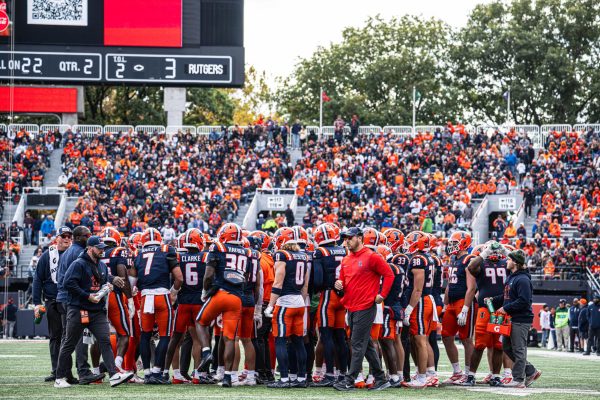Urbana releases open data service
Feb 26, 2015
The city of Urbana has released a new open data web portal so residents can view the city government’s operations and expenditures.
“This portal will allow anyone to see information about the city government,” said Sanford Hess, Urbana Information Technology director. This information includes data regarding budgets, financial plans, environment and fire and police information.
“What open data is, it’s this idea that governments … have been sitting on tons of data for years,” Hess said. “So open data is this idea of just putting that out there in a sort of spreadsheet kind of format where people can dig into it much easier.”
The city will pay Seattle-based software company Socrata $4,800 to display the data through its servers using spreadsheets, graphs and charts.
After looking into open data sites, the department decided it would be a useful way for not only IT department employees, but other city employees, managers and residents, to obtain information and data regarding the government without being required to file for reports.
Get The Daily Illini in your inbox!
“It’s wide open, anybody from anywhere in the world can hit it,” said Hess.
“Making governmental information public will eliminate the need for many Freedom of Information Act requests,” said Bill Brown, alderman for Ward 4. The act requires the government to release specific information or documents to the public upon request, unless the information falls under an exemption.
Brown said residents will also be able to view ordinances and resolutions even after they have been revised and voted on, which is something that was more difficult to do in the past.
“Students doing studies can just download the data and actually do some filtering of the data and visualization. It builds some transparency to see what is happening in the city,” Brown said. “It’s actually more powerful to be able to use the data for yourself.”
Hess said the department has also taken security measures to protect privacy. For example, even though police arrest reports now show the person’s name, the information on the open data site will not.
Furthermore, if an incident takes place at a certain address, the location will be named through block number and street name, instead of the actual address so people will still be able to identify whether the incident took place in their neighborhood.
For now, there have only been nine data sets released, but Hess hopes there will be more in the future. The website also offers tutorials to assist people in finding the information.
“The main thing we’re looking for here is for people, and city employees as well, to be able to make better decisions based on data,” said Hess.





